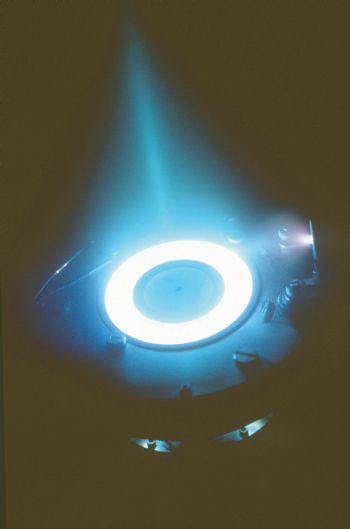
#aerospace #nasa In 2019, NASA will send out a robotic probe to retrieve an asteroid; and it will be a futuristic xenon-ion propulsion engine that will help get the job done. Instead of using rocket fuel, this harnesses magnetic fields to create thrust. The dramatic blue glow comes from photons released by the ions as they lose energy upon leaving the engine.
The prototype, which was recently inspected by NASA chief Charles Bolden, sits in a vacuum chamber where it is being tested at NASA’s Jet Propulsion Laboratory in Pasadena, California. Also called a solar-electric ion propulsion engine or Hall-effect thruster, it is powered by an inert and odourless xenon gas. The engine works by bringing together high-energy negatively charged electrons and neutral propellant atoms (the xenon gas) in a contained environment. Within all this ‘excitement’, mini-collisions produce a second electron, which creates the thrust.
NASA says: “Since the ions are generated in a region that is highly positive and the accelerator grid’s potential is negative, the ions are attracted towards the accelerator grid and are focused out of the discharge chamber through the apertures, creating thousands of ion jets. The stream of all the ion jets together is called the ion beam. The thrust force is the force that exists between the upstream ions and the accelerator grid. The exhaust velocity of the ions in the beam is based on the voltage applied to the optics.”
It is intended that the planned ion-powered unmanned spacecraft will capture a small asteroid and re-locate it near the moon, after which a space-walking team will get to it via the Orion space capsule (currently under development). NASA hopes to retrieve the asteroid in 2019 and explore it in 2021. This is all a build-up of larger and more-import-ant missions, including a trip to Mars.